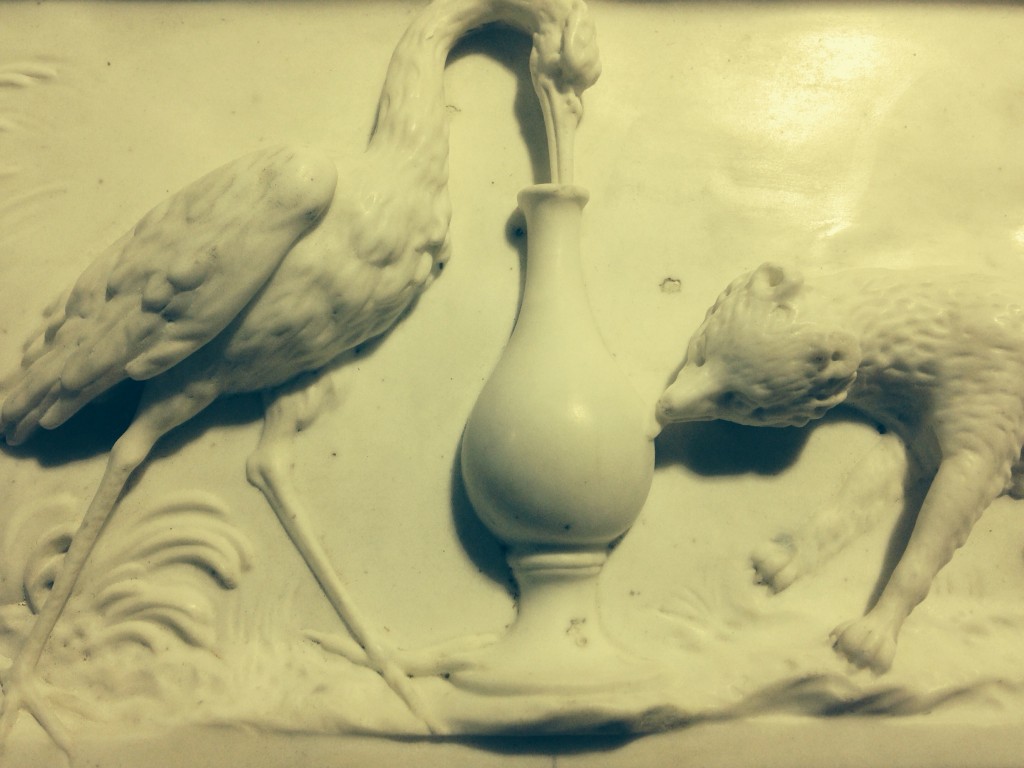Life is a series of stories and in many of the Antique Chimneypieces we sell at Jamb there is a tale to be told. Not just of origin, provenance or execution but of symbolism.
The proverb, the adage and the wisdom in Aesop’s fables became particularly popular in the 18th century. The message was prevalent from the word on the street corner to the designs created by the most important craftsmen, architects and designers. This mid 18th century fireplace by Thomas Carter I depicts Aesop’s Fable of the Stork and the Fox. When the fox purposely serves shallow soup to the Stork so he could not drink it, the Stork taught the Fox a lesson by serving his supper to him in a vase. The moral here is to treat others as you would wish to be treated.






